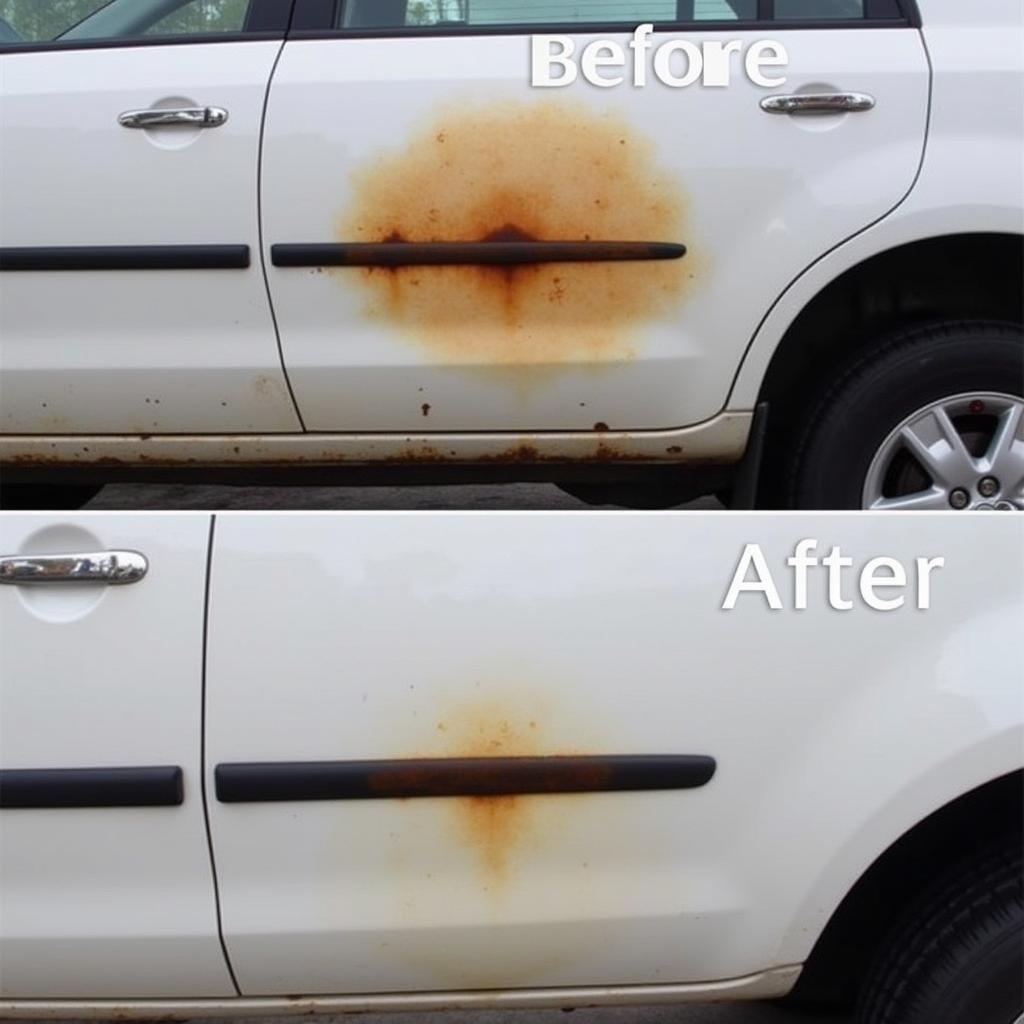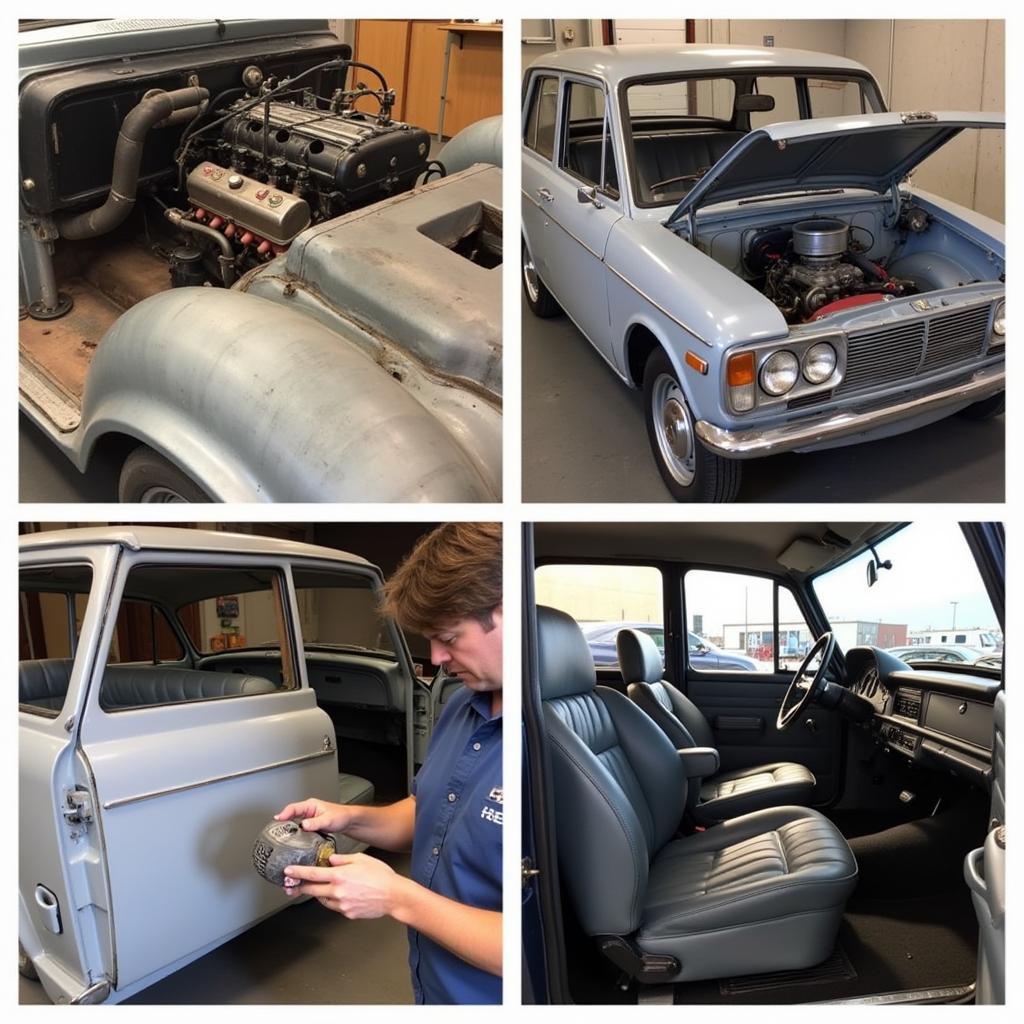A blown car speaker can quickly turn your favorite tunes into a distorted mess. Whether it’s a rattling sound, a complete lack of output, or intermittent crackling, figuring out How To Fix A Busted Speaker In A Car is a common DIY project. This guide provides a comprehensive walkthrough, from diagnosis to repair and even replacement, so you can get your car’s audio system back to its former glory.
Diagnosing Your Car Speaker Problems
Before you dive into fixing your busted speaker, it’s crucial to pinpoint the exact problem. A simple diagnosis can save you time and money. Is it just one speaker, or are all of them affected? Is the issue a blown speaker, a wiring problem, or something else entirely?
Common Symptoms of a Blown Car Speaker
- Distortion: This is the classic sign of a blown speaker. Music will sound fuzzy, unclear, and generally unpleasant at any volume.
- Rattling: A rattling noise, especially at higher volumes, often indicates a damaged voice coil or cone.
- No Sound: If a speaker isn’t producing any sound at all, it could be completely blown, or there might be a wiring issue.
- Intermittent Sound: If the sound cuts in and out, it could be a loose connection or a damaged wire.
Pinpointing the Culprit: Speaker or Wiring?
To determine whether the problem lies with the speaker itself or the wiring, try fading the audio to the suspected speaker. If you still hear distortion or rattling, the speaker is likely the culprit. If the sound cuts out entirely, it points towards a wiring issue. Another helpful test is to swap the connections from a known working speaker to the suspect one. If the problem moves to the other speaker, you’ve confirmed a speaker issue.
How to Fix a Busted Speaker: A Step-by-Step Guide
Once you’ve diagnosed the problem, here are the steps to fix a busted speaker in a car:
- Gather your tools: You’ll need a screwdriver, wire strippers, electrical tape, a multimeter (optional but recommended), and potentially a soldering iron depending on the repair.
- Remove the door panel: Carefully remove the door panel to access the speaker. Consult your car’s manual for specific instructions, as this process can vary between vehicles.
- Inspect the speaker: Check the speaker cone for tears, holes, or any other visible damage. Examine the wiring for loose connections, cuts, or fraying.
- Test the speaker with a multimeter (optional): If you have a multimeter, you can test the speaker’s impedance to confirm if it’s blown.
- Repair the speaker (if possible): Minor tears in the cone can sometimes be repaired with specialized glue designed for speaker repairs. If the voice coil is damaged, repair is often difficult and replacement is usually the best option.
- Replace the speaker (if necessary): If the speaker is beyond repair, replace it with a new one that matches the impedance and power handling of your car’s audio system.
- Reconnect the wiring: Securely connect the wiring to the new or repaired speaker.
- Test the speaker: Before reassembling everything, test the speaker to ensure it’s working correctly.
- Reassemble the door panel: Carefully put the door panel back together.
Preventing Future Speaker Problems
Proper care can extend the life of your car speakers and prevent future issues. Avoid playing music at excessively high volumes, which can cause distortion and damage the speakers. Ensure your car’s electrical system is functioning correctly, as voltage fluctuations can also harm speakers.
Protecting Your Investment: Tips for Long-Lasting Car Speakers
- Moderate Volume Levels: Keeping the volume at a reasonable level is the easiest way to protect your speakers.
- Quality Audio Files: Using high-quality audio files minimizes distortion and strain on the speakers.
- Regular Inspections: Periodically check your speakers for any signs of wear and tear.
“One common mistake people make is cranking up the bass too high. This puts a tremendous strain on the speakers and can lead to premature failure,” says Michael Stevens, Lead Automotive Electrical Engineer at Autotronics Inc. “A good rule of thumb is to keep the bass level balanced with the other frequencies.”
Choosing the Right Replacement Speaker
If you need to replace a speaker, consider factors like size, impedance, and power handling. Choosing a speaker that matches your car’s audio system will ensure optimal performance.
Matching Impedance and Power Handling
Matching the impedance (measured in ohms) of the new speaker to your car’s amplifier is essential. Mismatched impedance can damage both the speaker and the amplifier. Also, ensure the new speaker’s power handling is compatible with your car’s audio system.
“Investing in quality speakers can make a significant difference in your car’s audio experience,” advises Maria Sanchez, Senior Audio Technician at Sound Solutions. “Don’t just go for the cheapest option. Consider the sensitivity and frequency response of the speaker to ensure it delivers the sound you want.”
Conclusion
Fixing a busted speaker in your car can be a rewarding DIY project. By following these steps and understanding the underlying causes of speaker failure, you can get your car’s audio system back on track and enjoy your favorite music once again. Remember to always prioritize safety and consult your car’s manual for specific instructions. If you’re unsure about any step, don’t hesitate to reach out for professional assistance. Connect with AutoTipPro for support at +1 (641) 206-8880. Our office is located at 500 N St Mary’s St, San Antonio, TX 78205, United States. We’re always happy to help diagnose and fix your car audio issues.






Leave a Reply